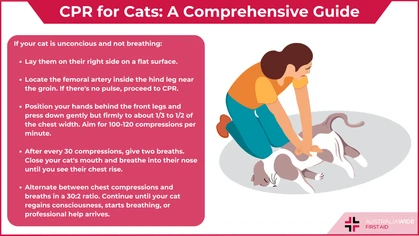Cat Parasites – Keeping Your Feline Friend Safe

Pets
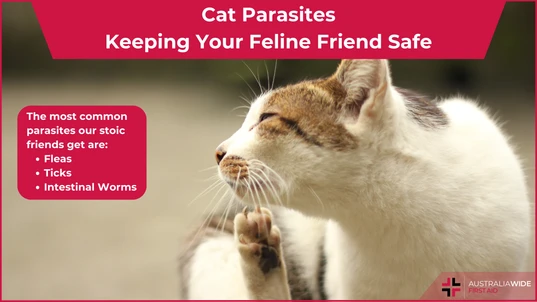 We all love our cats, but they can sometimes carry parasites that can harm both of them, other furry friends in the house, and our families. In Australia, it's important to know about these parasites, how to identify them, how to get rid of them, and when to seek the help of professionals.
Australia's diverse climate and environment create an ideal environment for various parasites that can infect your beloved cat. Some of the common parasites that your cat may encounter are:
We all love our cats, but they can sometimes carry parasites that can harm both of them, other furry friends in the house, and our families. In Australia, it's important to know about these parasites, how to identify them, how to get rid of them, and when to seek the help of professionals.
Australia's diverse climate and environment create an ideal environment for various parasites that can infect your beloved cat. Some of the common parasites that your cat may encounter are:
- Fleas
- Ticks
- Intestinal Worms

Over-grooming and scratching can both be signs of fleas on your cat.
The Flea: Uninvited Guests in Your Cat's Fur
Fleas are the most notorious and pesky intruders that can latch onto your cat. These minuscule and hard-to-spot creatures are experts at hitching rides on your cat during outdoor adventures and can even infiltrate your home through contact with infested areas, which can lead to a much bigger problem - that's why catching these little pests early is key. Identification: Identifying fleas might seem like spotting a needle in a haystack, but keep an eye out for tell-tale signs. Common indicators include excessive scratching, persistent itching, or visible bite marks on your cat's skin. Cats, unlike dogs, groom themselves quite regularly and might eat the fleas they find, making it hard for you to find the source of their new skin problems. Here's what the experts say cat owners should look out for if they suspect fleas:- Look for flea dirt - another word for flea droppings or poop. It will look like black pepper scattered throughout your cat's fur or on their favourite sleeping spot.
- Watch to see if your cat is grooming more than usual.
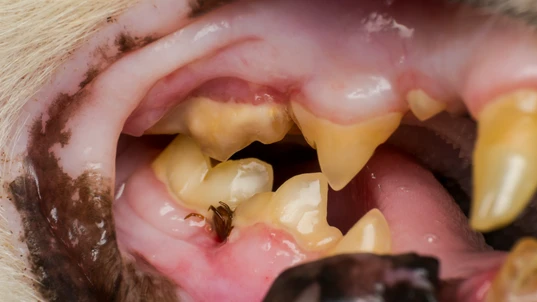
Ticks can be found on any part of your cat.
The Creepy Crawly Tick
Australia's expansive terrain harbours a staggering diversity of ticks, exceeding 70 known species. Among these, the paralysis tick, found in Eastern Australia (Ixodes holocyclus), stands out as one of the worst, potentially causing paralysis and, in severe cases, fatalities, while other ticks pose less threats and are more of a nuisance. Generally, ticks attach themselves to your cat's skin, particularly in warm, humid environments or wooded areas. How to Spot Ticks: Ticks can be found by feeling for small, hard bumps or, in some cases, by observing ticks on your cat's skin and fur as they crawl around. Health Implications: Tick bites can have some pretty serious consequences. They carry nasty side effects for their hosts, including:- Rickettsial
- Queensland Tick Typhus
- Conditions like Lyme Disease (the bacteria that causes Lyme disease has not yet been found in Australia)
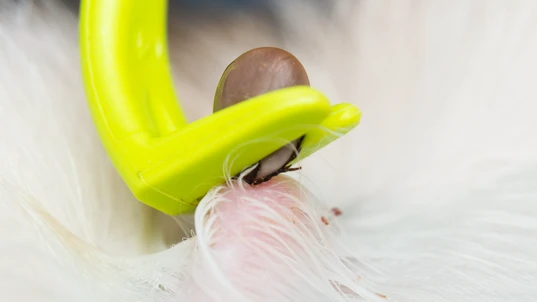
Proper removal of ticks ensures your cat won't have any further complications from retained parts.
Intestinal Worms: An All Too Common Challenge
Intestinal worms pose a widespread health risk for cats and can cause a range of health problems that can last for years. Types of Intestinal Worms: Cats in Australia are susceptible to various types of intestinal worms, including roundworms, hookworms, and tapeworms. Each type poses its own set of health risks and symptoms.- Roundworms: These spaghetti-like worms reside in the cat's intestines, and their eggs can be passed through faeces.
- Hookworms: These tiny worms attach themselves to the intestinal wall and feed on the cat's blood, potentially causing anaemia and other health issues.
- Tapeworms: Cats can acquire tapeworms by ingesting infected fleas or prey. These segmented parasites can be seen in the cat's faeces or around the bum area, resembling small grains of rice.
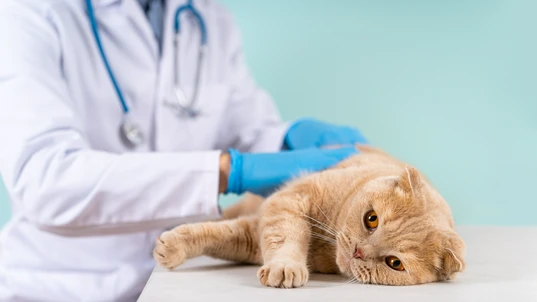
Vet checks are a great way to stay on top of any complications caused by parasites.
Conclusion
If you own a cat in Australia, you might have a run in with parasites. But with some preventive measures, regular check-ups, and a watchful eye, you can keep your furry friend happy, healthy, and free of parasites so they can live out a happy life.
Originally published at
https://www.australiawidefirstaid.com.au/resources/cat-parasites
as part of the Australia Wide First Aid Articles Library







